| Early Spring Date: | April 24 |
| Late Spring Date: | May 31 |
| Best Dates to See in Spring: | May 7-21 |
Spring: Blackburnian Warblers are one of the most sought-after species at Monticello Park. They are not common, and the best time to see one is during the second and third weeks in May. Blackburnians have a long migration in terms of time and distance. They winter in the northern part of South America and nest in conifer and mixed forests in Canada, the northern United States, and the Appalachian Mountains.
Fall: Blackburnian Warblers are seen infrequently at Monticello during fall migration. They are most likely to pass through during the first two weeks in September.
Where to See Them in the Park
Blackburnian Warblers usually stay in the canopy. They move quickly and can be difficult to see. They sometimes go into the stream to bathe and drink.
Physical Description
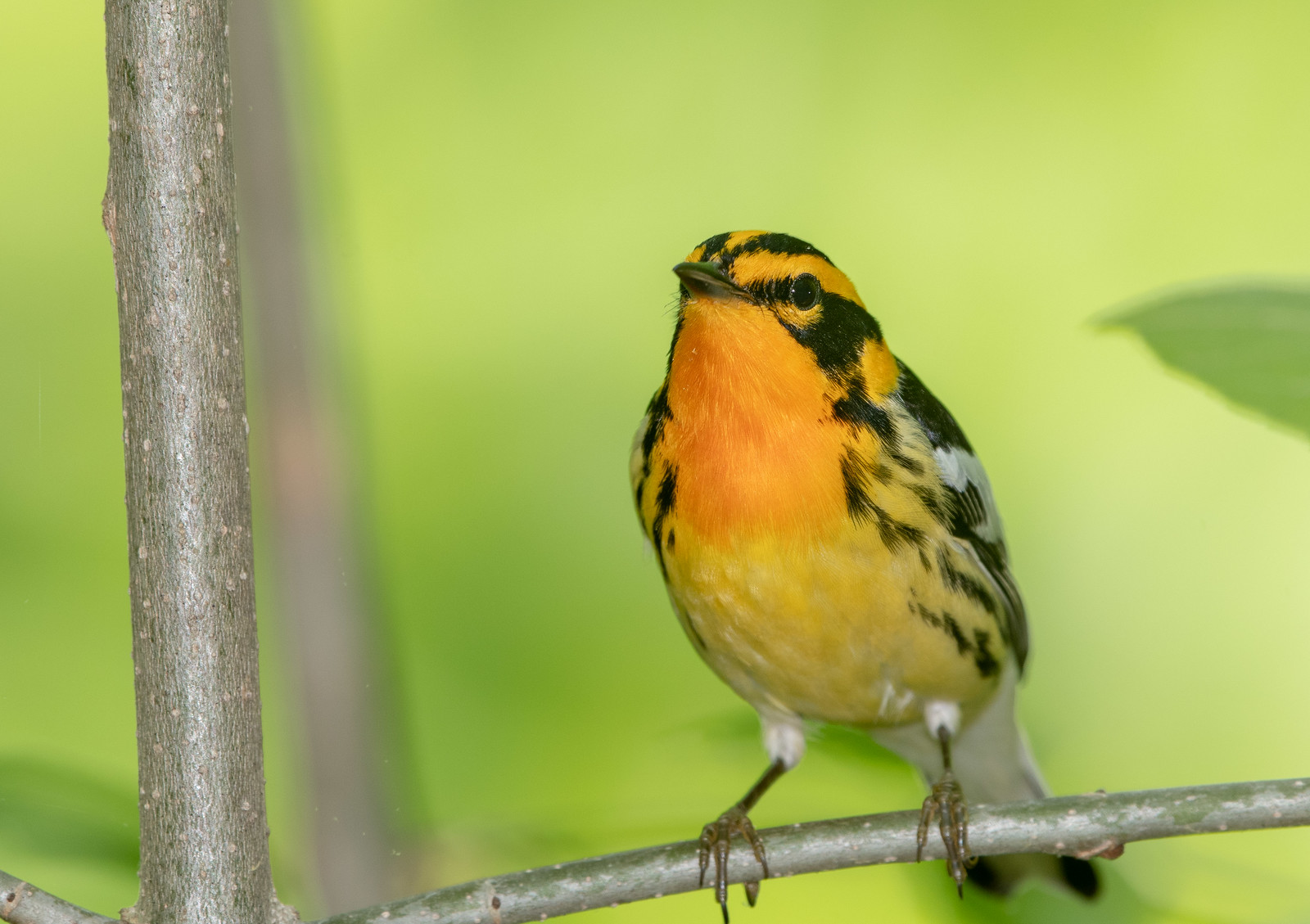
The Day-Glo orange throat of a Blackburnian can create a rush of excitement no matter how often you see it.
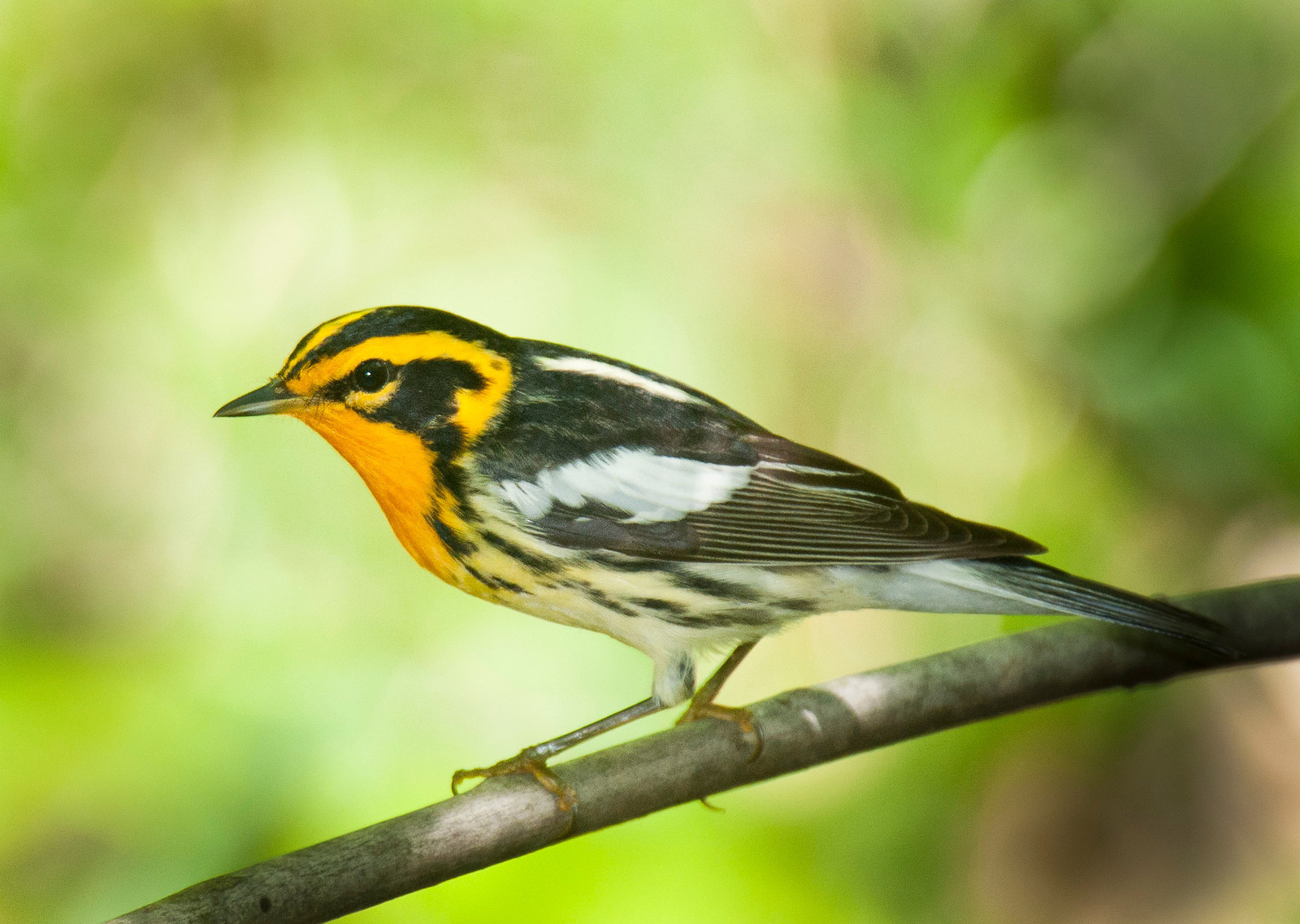
The male has a black ear patch that extends through the eye. His wide, bright orange eyebrow curves around the ear patch. The arc under his eye is also orange. The back is mostly black with a large white patch on each wing. The flanks have black streaks.
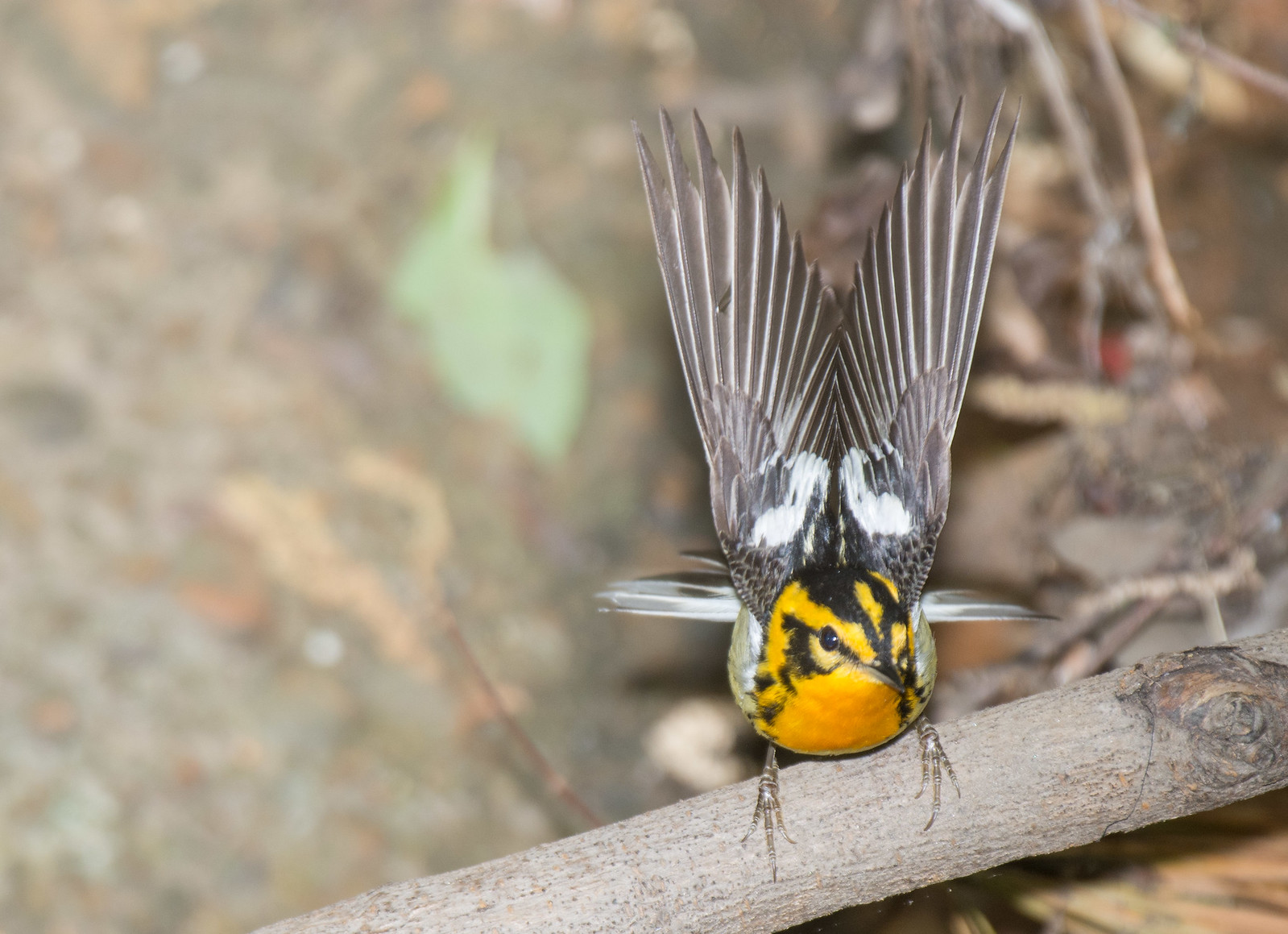
The black upperwings have white marks.
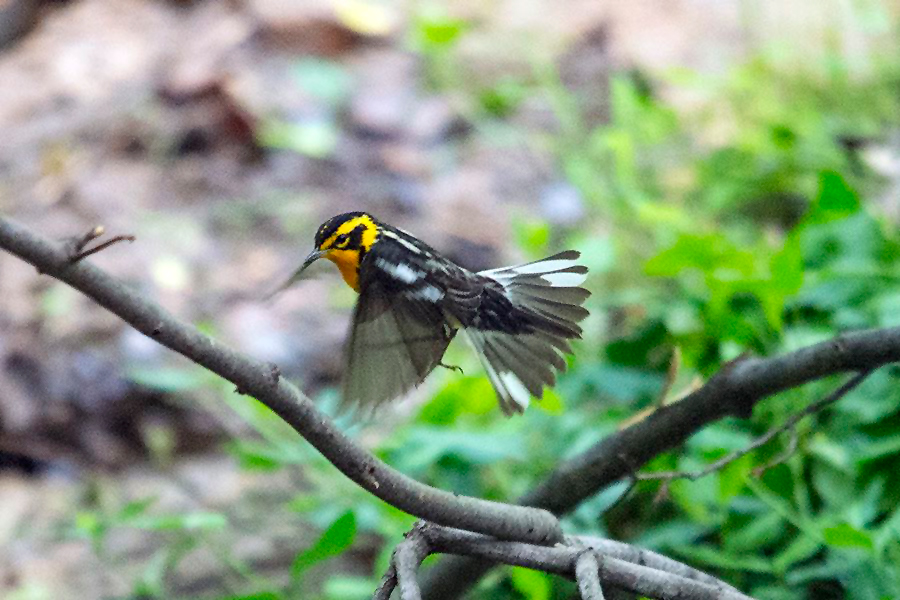
Blackburnian Warblers have eight black central tail feathers. The two outer tail feathers on each side are white-and-black.
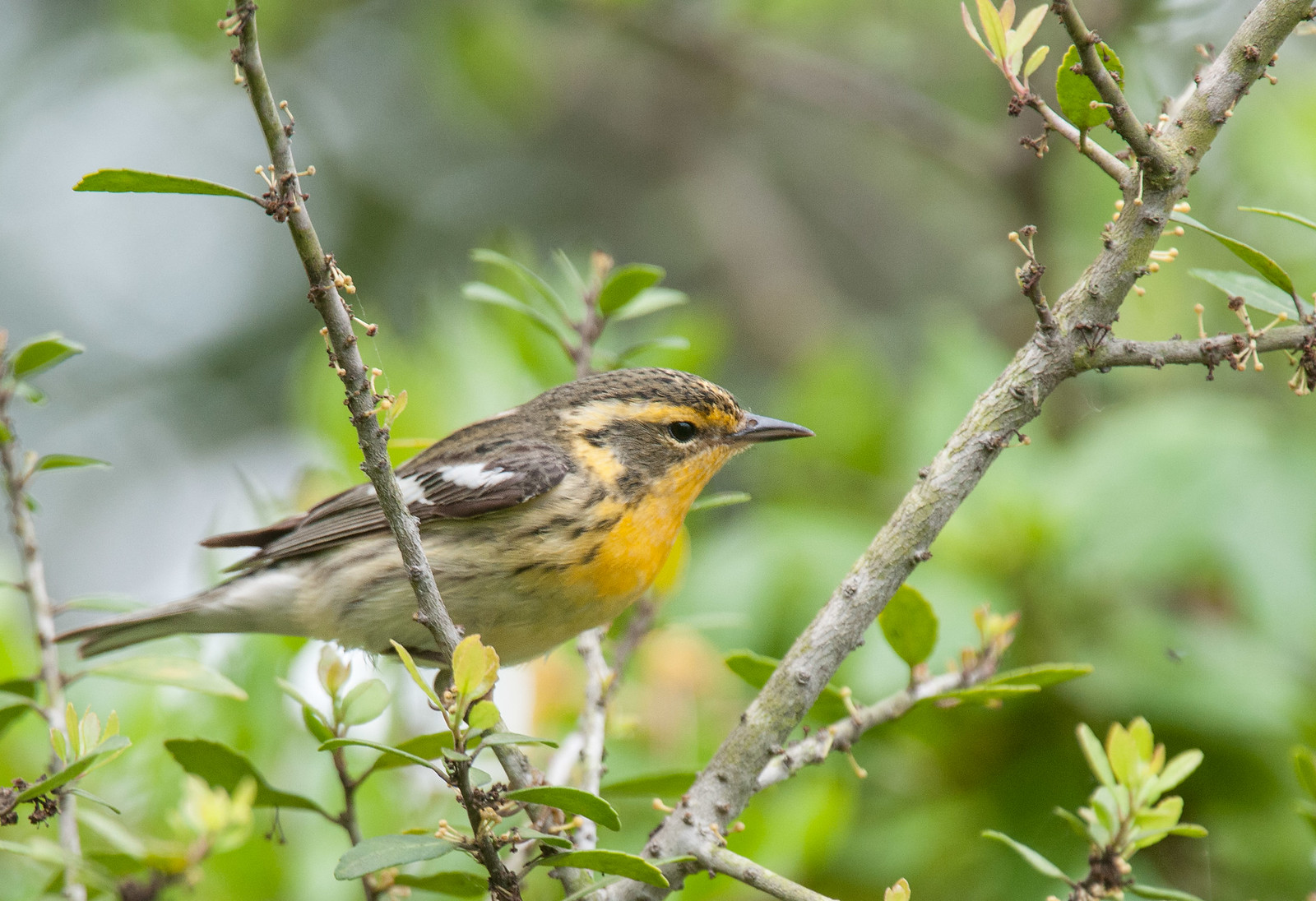
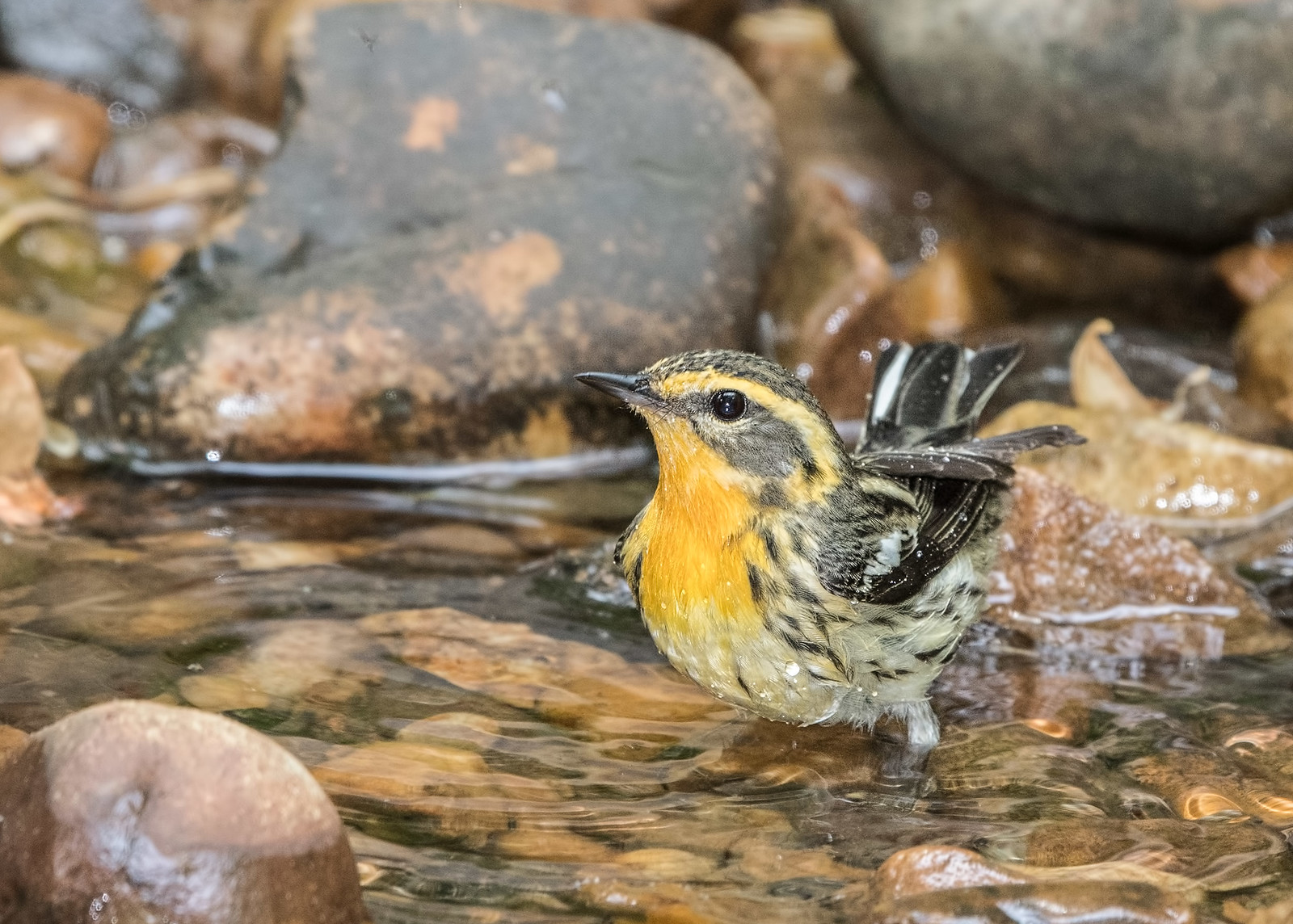
The female is not as strikingly colored as the male. In place of the bright orange, her throat and eyebrows are the color of orange juice. And instead of a big white patch on each wing, she has a pair of white wingbars.
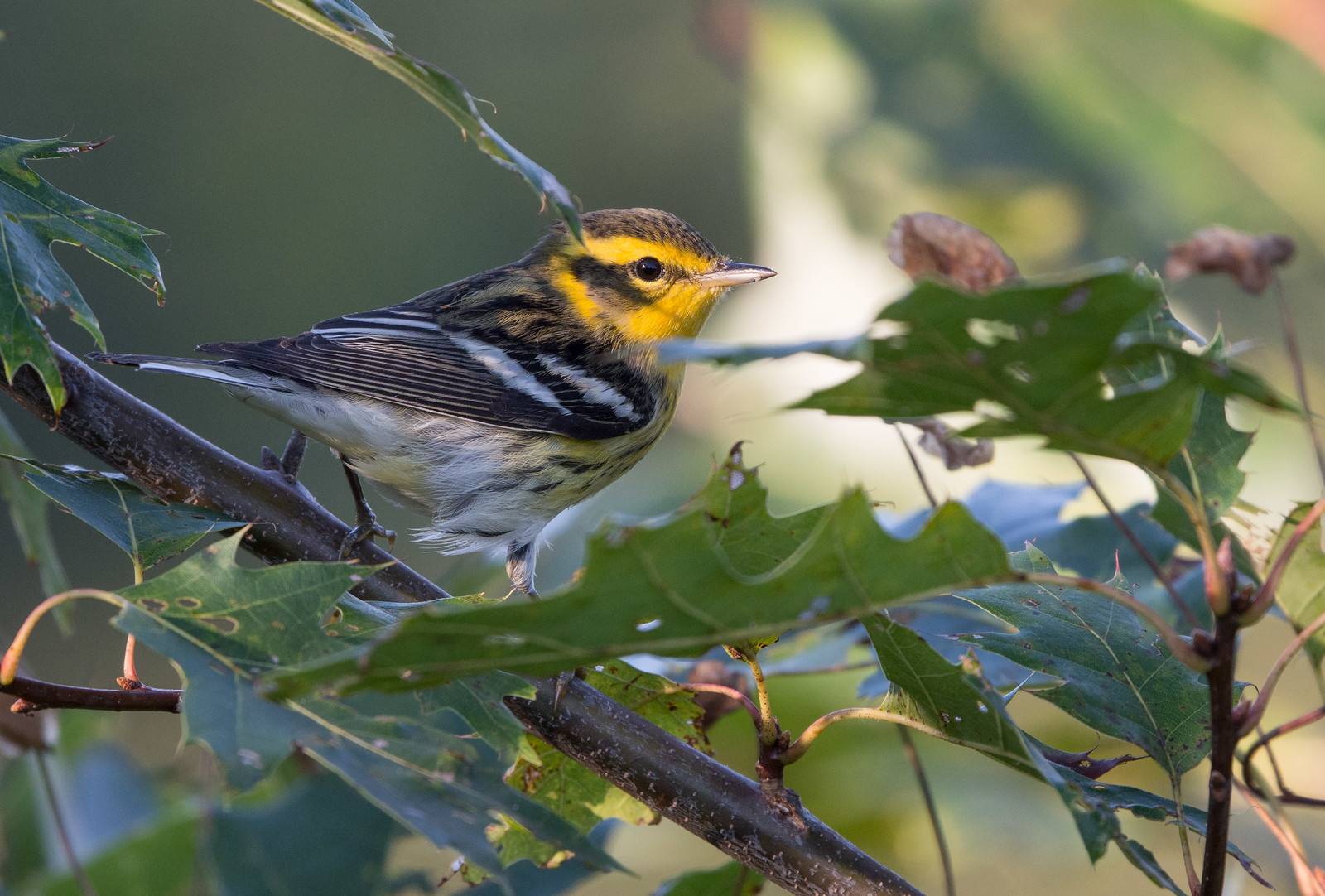
Fall: Fall adult males are paler than adult spring males and have two white wingbars instead of the white wing patch of the spring birds.
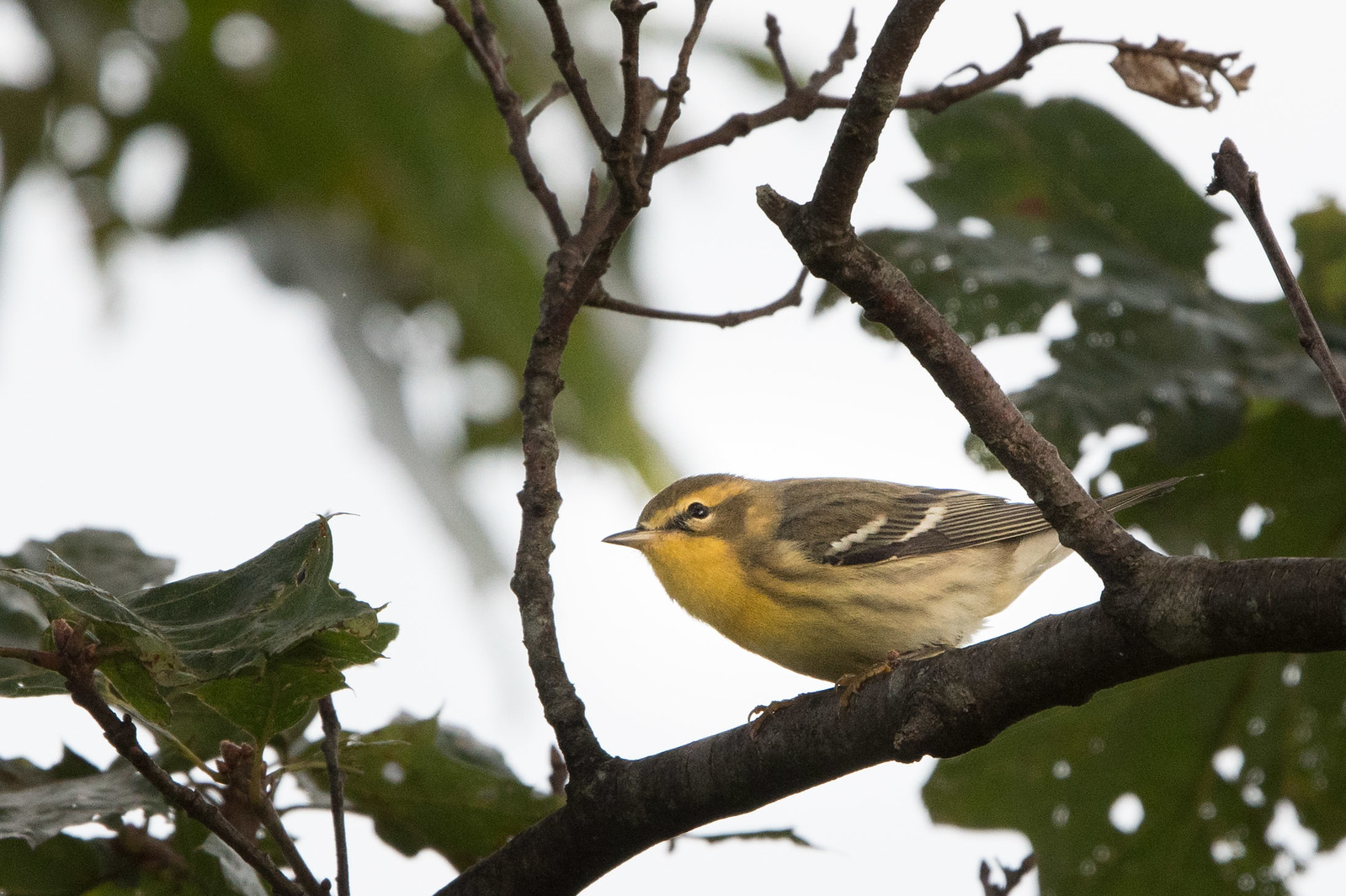
Fall adult females are similar to adult spring females, but their upperparts are more olive. First-fall males look like fall adult females with slightly darker heads. First-fall females are buffy rather than yellow, and they have white wingbars.
Vocalizations
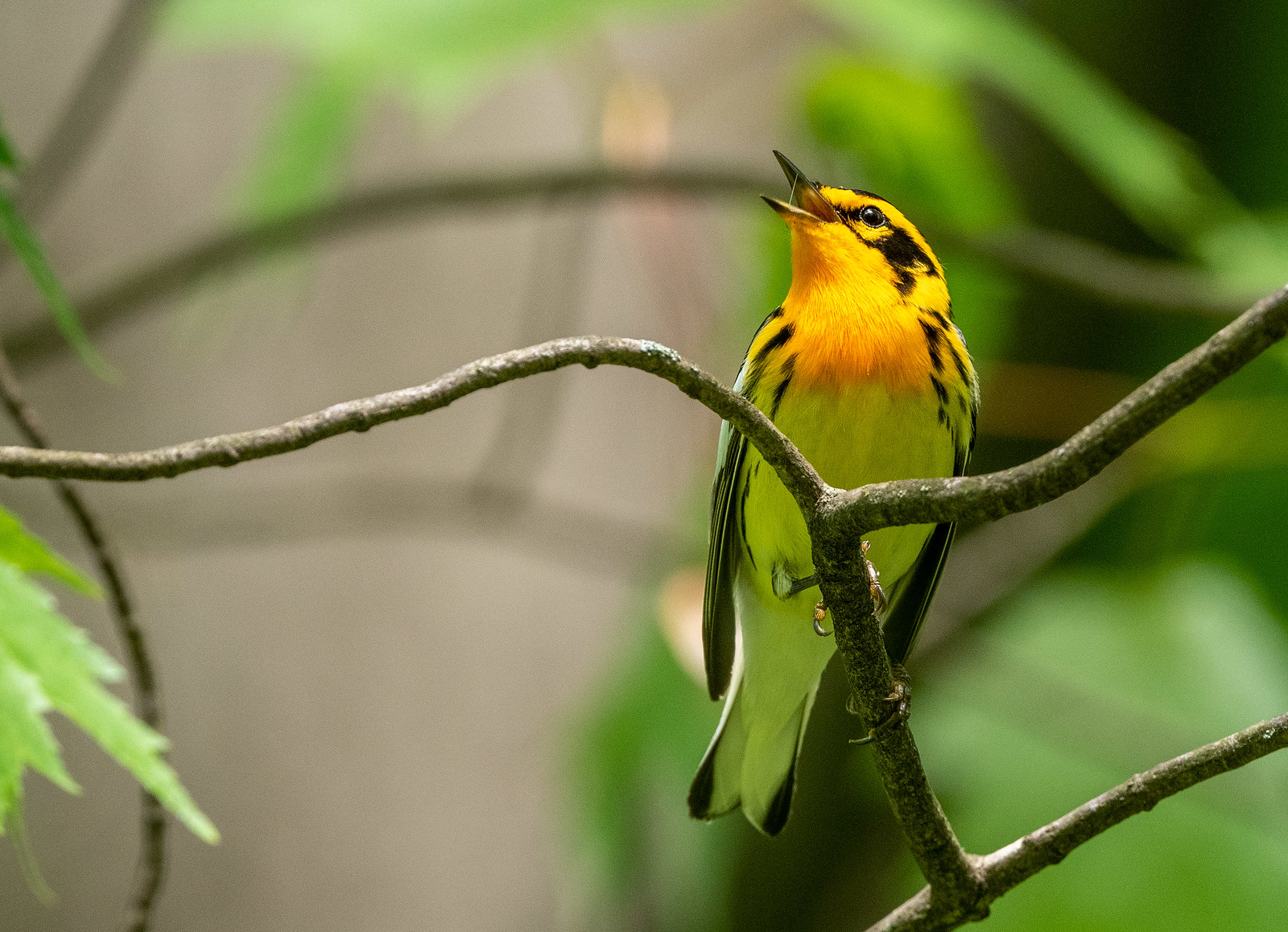
The song of the Blackburnian Warbler is a high-pitched series of notes followed by a high trill.
Hear the song of the Blackburnian Warbler.Notes
The Blackburnian Warbler was named after an English naturalist who never saw one in the wild. Anna Blackburne lived from 1726 to 1793, and a German zoologist named Philipp Ludwig Statius Muller named the warbler in her honor. She wanted to study natural history in a systematic manner, and she became a pioneer among women scientists. Her primary work was in entomology, and she corresponded with Carl Linnaeus, who developed the system for giving two-part scientific names to all living organisms.
Origin of Names
Common Names: Blackburnian from the English naturalist Anna Blackburne. The New World Warblers were named for their similar appearance to European warblers, to whom they are not related. Most of the New World warblers do not warble (sing continuously with notes that change frequently).
Genus Name: Setophaga means moth eating.
Species Name: Fusca means dark, from the plumage.
Blackburnian Warbler video footage
Return to the Index
